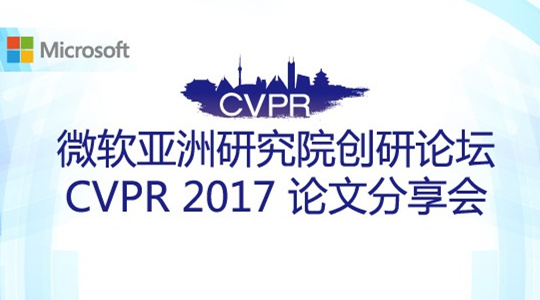
当前课程知识点:Overview of China > 第三章 理解中国 Understanding China > 3.3 中国经济 China's Economy > 3.3.2 中国古代商业 Ancient Chinese Commerce
返回《Overview of China》慕课在线视频课程列表
朋友 您好 欢迎您 走进中国
Hello! Welcome to Overview of China
了解更多关于中国的知识
to know more about China.
现在我们来继续学习中国古代经济的商业部分
Now we continue to learn about China's economy.
古代商业
Ancient Commerce
中国古代商品经济起始于原始社会末期的以物易物贸易
In ancient China, commodity economy started from barter trade at the end of primitive society.
海贝常作为交换的等价物
Seashells were often used as the equivalent of exchange,
成为中国最早的货币
and became the earliest currency in China.
所以汉字中表示与钱财有关的多用贝字旁
So the shell is often used as component in the Chinese characters related to money.
到了商朝时期
By the time of the Shang Dynasty,
由于政府重视发展商业
the government attached great importance to the development of commerce,
职业商人和贝币出现
professional merchants and shell coins appeared,
推动了商品经济的发展
which promoted the development of commodity economy.
春秋战国时期
During the Spring and Autumn Period and Warring States Period,
各个诸侯国都发行自己的货币
each vassal state issued its own currency,
如刀币 布币 蚁鼻钱等
such as knife coin, cloth coin, Yibi coin, etc.,
直至秦朝统一货币
until the Qin Dynasty, currency was unified,
使用圆形方孔的半两钱
using coins which is round with square holes,
大大方便了商品经济的发展
greatly facilitating the development of commodity economy.
但是 商鞅认为农是本 商是末
Shang Yang, however, believed that the peasants were the source and commerce the last.
为了富国强兵
In order to enrich the country and strengthen the army,
必须奖励耕战
it was necessary to reward the tiller warfare.
所以在变法中提出重农抑商政策
Therefore, the policy of emphasizing agriculture and restraining commerce was put forward in the reform.
后来 历代统治者延续了这一政策
Later, successive rulers continued this policy,
为了保证国家的赋税收入
in order to ensure the state's tax revenue,
保护小农经济
protect the small-scale peasant economy,
打击商人势力
and combat the power of merchants.
当时还产生了士农工商四民的说法
At that time, there were four classes divided who were scholars, peasants, industrialists and merchants.
商人的社会地位非常低下
The social status of merchants was very low.
贸易也被集中在城市的固定区域 市 里面
Trade was also concentrated in the "Shi"(market), a fixed part of the city,
与手工作坊的 坊 严格分离
strictly separated from the "Fang" of manual workshops,
由官府派专职官员管理
and managed by full-time officials appointed by the government.
定时开市和闭市
The market can only be opened and closed regularly.
不过 隋唐时期长安城内的
However, during the Sui and Tang Dynasties,
东市和西市商业繁荣
the East and West Markets in Chang 'an were prosperous in commerce,
南北经济交往和对外贸易发达
and the economic exchanges between the north and the south and foreign trade were developed.
出现了柜坊和飞钱
And appeared Guifang and Fei-Qian(Flying Money).
柜坊就是钱庄 早期银行的雏形
Guifang is a private bank, the rudiment of early bank,
飞钱类似于今天银行的汇票
Flying Money is similar to bank's draft today.
宋朝时期 商业发展达到高峰
During the Song dynasty, the commercial development reached its peak
出现了夜市 早市和草市
with the emergence of Night Market, Morning Market and Village Fair,
集镇兴盛
and the prosperity of market towns.
出现了世界上最早的纸币 交子
The earliest paper money "Jiaozi" appeared in the world,
这些都有利于商品的流通
which was conducive to the circulation of commodities
促进了商品经济的发展
and the development of commodity economy.
北宋画家张择端的 清明上河图
"Riverside Scene at Qingming Festival" by Zhang Zeduan, a painter of the Northern Song Dynasty,
生动记录了汴京城繁荣的景象
vividly records the prosperity of Bianjing
以及市井小民的生活状况
and the living conditions of the people in the city.
城内瓦肆林立 人潮如织
It reveals the lifestyle of all levels of the society from rich to poor
一派欣欣向荣的景象
as well as different economic activities in rural areas and the city.
这里的瓦肆是指当时市民休闲娱乐的场所
The shop Wasi here is the place that shows the citizen recreational at that time.
明清时期
During the Ming and Qing Dynasties,
商品经济进一步发展 促进了市民阶层的兴起
the further development of commodity economy promoted the rise of the citizen class.
他们主要从事手工业生产和商业贸易
They were mainly engaged in handicraft and trade,
形成了许多地域性的商人群体
and formed many regional merchant groups,
如徽商 晋商等
such as Hui merchants and Jin merchants.
由于深受儒家思想的影响
deeply influenced by Confucianism,
这些商人将诚信经营 救世济民
these merchants regarded honest management, saving the world and benefiting the people,
高度的社会责任感作为经商的最高精神追求
and a high sense of social responsibility as the highest spiritual pursuit of doing business,
形成了中国古代的儒商群体
forming the group of Confucian Merchants in ancient China.
对外贸易是中国古代商业的重要组成部分
Foreign trade was an important part of ancient Chinese commerce.
自西汉张骞通西域以来
Since Zhang Qian passed through the Western Regions of the Western Han Dynasty,
丝绸之路有力地促进了中西方经济文化的交流
the Silk Road has effectively promoted economic and cultural exchanges between China and the west,
长安和洛阳成为两大商业中心
Chang'an and Luoyang became two major commercial centers.
隋唐时期
During the Sui and Tang Dynasties,
海上 陆上丝绸之路商人往来不绝
there was a continuous flow of merchants along the Silk Road on land and sea,
中外贸易发达
and trade between China and foreign countries developed.
长安城成为当时世界上最大的国际化大都市
Chang'an city became the largest international metropolis in the world at that time.
丝绸 茶叶 瓷器成为对外贸易的主要产品
Silk, tea and porcelain became the main products of foreign trade
深受中亚 西亚和欧洲人的欢迎
and were welcomed by people in Central Asia, West Asia and Europe.
元代的大都也是国际化大都市
Khanbaliq(Dadu) in the Yuan Dynasty were also international cities.
欧洲人马可·波罗通过丝绸之路来到中国
Marco Polo, a European, came to China through the Silk Road
在中国游历了17年
and traveled in China for 17 years.
写成了 马可 波罗游记 成为欧洲人了解中国的窗口
His travel notes became a window for Europeans to learn about China.
明朝的对外贸易发达
The foreign trade in the Ming Dynasty was developed,
主要体现为朝贡贸易
which was mainly reflected in tributary trade.
这种 厚往薄来 的贸易体制
This "Give much and receive little" trade system
为中国赢得了国际声誉
won China an international reputation,
但是也成为国家发展的负担
but it also became a burden for the country's development.
1405到1433年郑和七次下西洋 就是最好的例证
The best example is Zheng He's seven voyages to the Western Seas between 1405 and 1433.
明末的倭寇盛行
With the prevalence of Japanese pirates in the late Ming Dynasty
和清初的海禁政策
and the maritime embargo policy in the early Qing Dynasty,
中国对外贸易逐渐萎缩
China's foreign trade gradually shrank,
闭关锁国政策一直持续到1840年
and the policy of seclusion lasted until 1840.
中国古代的 重农抑商 海禁
In ancient China, the policies of "emphasizing agriculture and suppressing commerce", "Ban on maritime trade"
和 闭关锁国 政策 曾起过一定的自卫作用
and "the seclusion policy" played a defensive role,
但严重阻碍了商品经济和资本主义萌芽的发展
but seriously hindered the development of commodity economy and the budding of capitalism.
阻碍了中外交流
It has hindered exchanges between China and foreign countries
使中国失去了利用国际贸易开辟市场
and deprived China of its dominant position of exploiting international trade
推进工业化的优势地位
to expand market and promote industrialization.
好 关于中国古代经济我们就学习到这里 谢谢
OK! That's all for ancient China's economy, thank you!
-1.1 初识中国 First acquaintance of China
--1.1 初识中国 First acquaintance of China
-1.2 人文中国 Humanistic China
-1.3 美丽中国 Beautiful China
-1.4 绿色中国 Green China
-1.5 民俗中国 Folklore China
-小测验 Quiz
-2.1 畅行中国 Unimpeded China
--2.1.1 中国交通方式 China's mode of transportation
--2.1.2 中国著名人文景观 Famous cultural landscape in China
--2.1.3 中国著名自然景观 Famous natural landscape in China
-2.2 乐居中国 Happy living in China
--2.2.1 中国传统官式建筑 Traditional Chinese official architecture
--2.2.2 中国传统民居 Traditional Chinese houses
--2.2.3 中国现代城镇的发展 The development of modern towns in China
-2.3 食在中国 Eating in China
-2.4 穿在中国 Wear in China
-2.5 医在中国 Medicine in China
-小测验 Quiz
-3.1 中国历史 Chinese History
--3.1.1.走向大一统的中华文明 Towards the unification of Chinese civilization
--3.1.2 多民族融合的封建帝国 A multi-ethnic feudal empire
--3.1.3 日新月异的和平中国 Peaceful China changing with each passing day
--小测验 Quiz
-3.2 中国科技 China‘s Science and Technology
--3.2.1 中国古代四大发明 Four great inventions in ancient China
--3.2.2 中国古代数学和天文学 Ancient Chinese mathematical astronomy
--3.2.3 古代青铜器和农业科技 Ancient bronzes and agricultural technology
--3.2.4 中国新四大发明 Four new inventions in China
--3.2.5 国防与民生科技 National defense and people's Livelihood Science and technology
--3.2.6 中国航空航天 China Aerospace
--小测验Quiz
-3.3 中国经济 China's Economy
--3.3.1 中国古代农业和手工业 Ancient Chinese agriculture and handicraft industry
--3.3.2 中国古代商业 Ancient Chinese Commerce
--3.3.3 中国现代经济政策和体制 China's modern economic policy and system
--3.3.4 中国经济发展的成就 Achievements in China's economic development
--3.3.5 中国经济发展的新趋势 The new trend of China's economic development
--小测验Quiz
-3.4 中国教育 Education in China
--3.4.1 古代哲学和教育思想 Ancient philosophy and educational thought
--3.4.2 古代学校教育 Ancient school education
--3.4.3 科举制度 Imperial examination system
--3.4.4 扫盲运动与高考 Literacy campaign and college entrance examination
--3.4.5 中国现代教育体系 China's modern education system
--3.4.6 国际教育交流与合作 International educational exchange and cooperation
--小测验Quiz
-4.1 文学欣赏 Literary Appreciation
--4.1.1 《诗经》和《离骚》Book of Songs and Li Sao
--4.1.2 诸子散文 Philosophical Prose
--4.1.3 唐诗宋词 Chinese Tangsong Poetics
--4.1.4 四大名著 Four Masterpieces
--4.1.5 中国现代文学 Modern Chinese Literature
--4.1.6 中国当代文学 Contemporary Chinese Literature
--小测验 Quiz
-4.2 音乐欣赏 Music Appreciation
--4.2.1 中国传统音乐与乐器 Traditional Chinese Music and Musical Instruments
--4.2.2 中国古典十大名曲 Ten Famous Classical Chinese Songs
--4.2.3 五彩缤纷的现代音乐 Colorful Modern Music
--小测验 Quiz
-4.3 戏曲欣赏 Opera Appreciation
--4.3.2 豫剧和其他地方戏 Henan Opera and Other Local Operas
--4.3.3 皮影戏和样板戏 Shadow Play and Model Play
--小测验 Quiz
-4.4 书画欣赏 Appreciation of Painting and Calligraphy
--4.4.1 文房四宝及书体 Four Treasures of Study and Calligraphy Style
--4.4.2 书法艺术习成及名家名作 Calligraphy and Masterpieces
--4.4.3 中国画的工具及分类 Tools and Classification of Chinese Painting
--4.4.4 中国绘画名家名作 Famous Works of Chinese Painters
--4.4.5 中国书画艺术思想 The artistic Thought of Chinese Painting and Calligraphy
--小测验 Quiz
-4.5 影视欣赏 Film Appreciation
--4.5.3 20世纪90年代至今中国电影欣赏 Chinese film appreciation since 1990s
--小测验 Quiz
-4.6 武术欣赏 Chinese Martial Arts Appreciation
--4.6.1 中国武术的源流与发展 The Origin and Development of Chinese Martial Arts
--4.6.2 中国武术流派 Chinese Martial Arts schools
--4.6.3 十八般武器 18 Weapons of Martial Arts
--4.6.4 中国武术文化欣赏 Appreciation of Chinese Martial Arts Culture
--小测验 Quiz
-5.1 源远流长的古代中外交流 Ancient exchanges between China and foreign countries
--5.1源远流长的古代中外交流 Ancient exchanges between China and foreign countries
-5.2 丰富多彩的现代中外交流 Rich and colorful modern exchanges between China and foreign countries
--5.2 丰富多彩的现代中外交流 Rich and colorful modern exchanges between China and foreign countries
-小测验 Quiz
-期末考试 Final Examination
--期末考试 Final Examination



